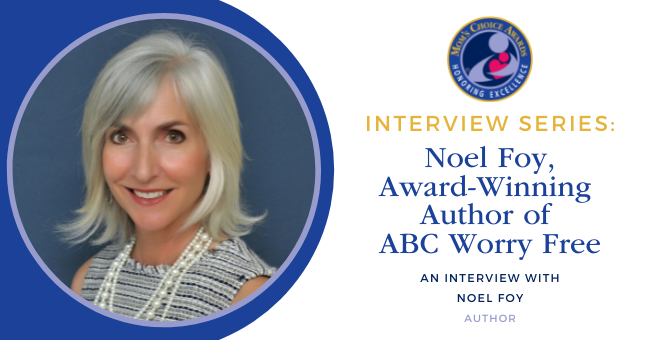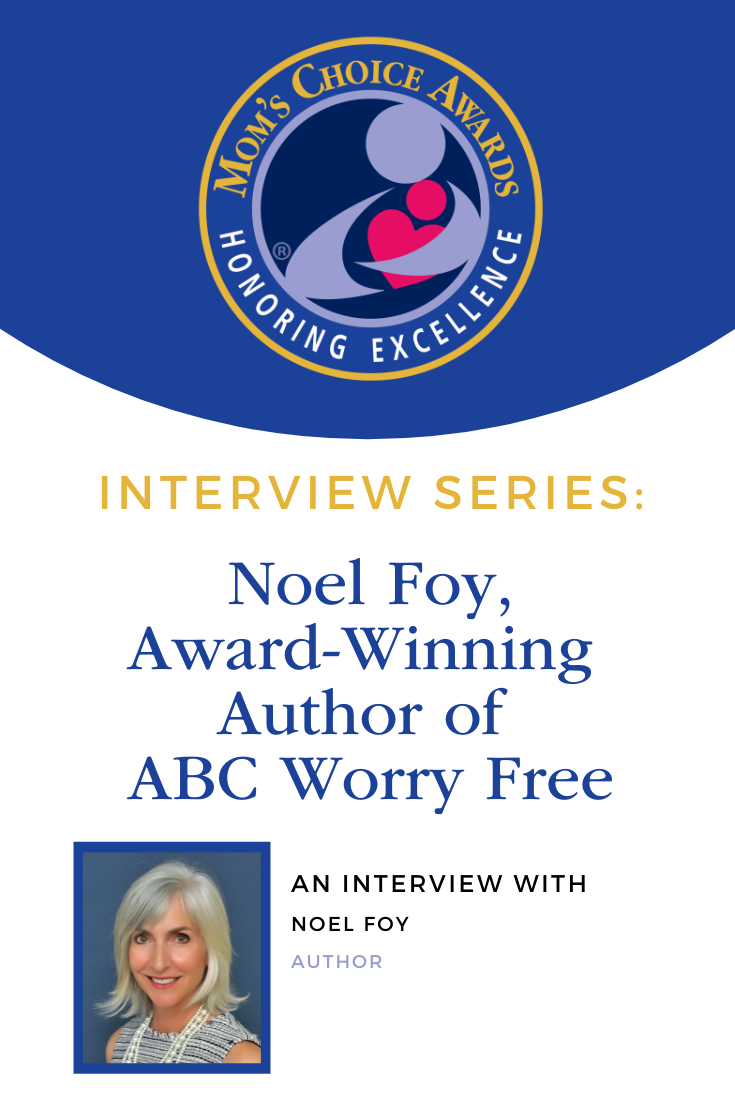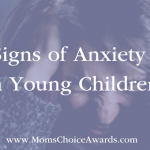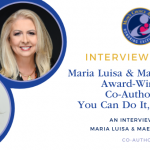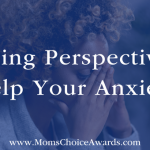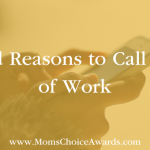Mom’s Choice Awards is excited to announce another post in our interview series where we chat with the inventors, designers, publishers, and others behind some of our favorite family-friendly products.
A big hello to our wonderful readers! As a part of our ongoing interview series, we at Mom’s Choice had the privilege of talking with Noel Foy, author of the Award-Winning book ABC Worry Free. ABC Worry Free is a great tool for any child or adult dealing with anxiety at school, home, and beyond. ABC Worry Free providing a relatable story and actionable approach to worry that can help individuals of all ages process and manage everyday, anxiety-provoking situations, so they can experience more success and enjoyment in life. In this interview, we catch up with Noel to learn about her educational background and how it influenced her in writing ABC Worry Free. Keep reading for the full interview!
MCA: Hi Noel! Thanks for taking some time to hang out with us and answer some questions. We’re excited to have you and ABC Worry Free in the Mom’s Choice family! Can you start by telling our readers about yourself?
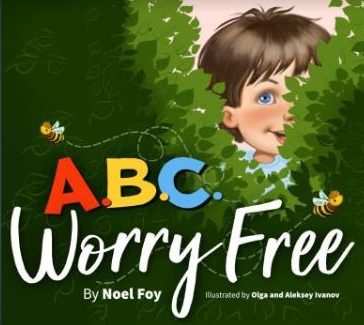
Noel Foy’s MCA award-winning book, “ABC Worry Free.”
Noel: From a very young age, I knew I wanted to be an educator…my mom was a teacher, and I was inspired by the ways she empowered her students, especially the ones who struggled with learning. I wanted to also inspire and empower my students—to be life-long learners…to believe in themselves…to have tools and strategies to help them when learning gets tough and do what I can to make learning fun and “sticky.”
I began my career as a classroom teacher, transitioned to being a learning specialist, and evolved into a neuroeducator. This evolution took shape as a result of one of my sons being diagnosed with Post Concussion Syndrome. I wanted to know how the concussion would impact his learning and life, and this brought me to many brain conferences that changed my life and career track.
I learned about the brain and how certain emotional states—anxiety, frustration, anger, boredom, or lack of relevance to what you’re learning—can activate your stress response and send you to Fight, Flight or Freeze. When this happens, your executive function goes offline, inhibiting your ability to pay attention, remember what you learn, make good decisions, regulate your emotions, think critically or shift your thinking in new ways. This helped me understand why many children zone out or act out in school (including my own sons!), and from that point on, I made it my mission to inform teachers, parents, counselors, and students about the brain, the impact of stress and what you can do to lower stress and maximize brain function. I founded Neuro Consulting to respond to this need.
If I’m not doing a workshop on working one-on-one with a client, you’ll find me reading more about the brain and how it likes to learn or I’ll be outside biking, walking the beach, or playing tennis.
MCA: As someone who has dealt with anxiety for the majority of their adult life, I so appreciate your efforts in helping people who deal with anxiety and books like ABC Worry Free. Was it your experience with being a neuroeducator that lead you in your path to becoming a writer and to writing ABC Worry Free?
Noel: I always enjoyed writing but didn’t envision myself as a “writer,” until I started reading children’s books to my kids. I thought to myself, “I think I can do this,” but I had no idea how competitive it is to get published. I wrote my first book, which did not get published, over 30 years ago. Looking back, I had no idea how much effort and research I needed to put into the writing process.
When I wrote ABC Worry Free, I was laser beam focused…I wanted to write a story that responded to the spike we were seeing in anxiety. It needed to empower others and have broad appeal to different audiences—teachers, counselors, coaches, parents, kids. I felt a children’s book would be an approachable way to begin learning about anxiety and start a conversation, including adults. My challenge was to write a relatable story that didn’t feel “too teachy” and provided a practical, easy to remember strategy based on research that could be used anywhere, anytime,
I shared the initial drafts with family members, counselors, and teachers to get feedback…I read the story to a couple of students and figured if it held their interest without illustrations, that was a good sign! Everyone’s feedback was so valuable! One of my sons shared a template he uses with screenwriting, which I found really helpful in structuring the story, and he made some great suggestions with the dialogue. LOTS of time was spent at the thinking and editing stages…I spent way more time at these two stages than actually writing the book!
MCA: Those can be the toughest stages to get through as a writer! You have such an extensive knowledge of anxiety and the effect it can have on the brain. Can you elaborate on your knowledge of anxiety and how exactly it works?
Noel: Anxiety is a feeling of dread or uneasiness…it can be bossy and tell us a story that we can’t do or handle certain things, and it can take up a lot of space in our brains that rob us of enjoying the good stuff! Lots of worries and “what if” kind of thinking can send emergency messages to our brain, which then activate our stress response.
Anxiety starts with a trigger that sparks worrying thoughts, which send alarm messages to our amygdala. (Think of your amygdala as an alarm center in your brain, much like a smoke detector in your home.) Stress chemicals soon rush throughout our body that make you feel differently physiologically (fast heartbeat, sweating, muscle tension, stomach ache or headache). We fill our minds with more worrying thoughts and begin to play a video in our mind that this situation isn’t going to end well and before you know it, we’re in Fight, Flight, or Freeze. You might notice someone breaking their pencil, throwing something, or making a nasty comment when they’re in fight mode. Folks in flight mode might leave the room without permission or ask to go to the nurse’s bathroom multiple times. Freeze mode is when you have that “deer in the headlights” look or feel stuck. When you’re in these states, your executive function is offline, but it will come back online when you calm down.
MCA: What are some of the most common misunderstandings about anxiety?
Noel: Typical misunderstandings include:
- That we should prevent anxious folks from ever feeling uncomfortable…”some” discomfort is to be expected when doing something hard or anxiety-provoking! Stepping into what makes us anxious helps build skills, resilience, and confidence.
- That you should overly reassure anxious folks or rescue them
- That you have to know everything before stepping into something you’re anxious about…while having some information and preparation makes sense, “worriers” will always want to know more or will think of “what if” scenarios, so no amount of data/evidence/reassurance is likely to satisfy them. Time is better spent focusing on skill-building, problem-solving and developing strategies to help you tolerate a bit of discomfort and reset.
- That you can just get rid of anxiety…anxiety is designed to protect us…there are times when we need to listen to the alarm messages our brain is sending, as they might be “real” emergencies, and there are times the worried thoughts are “perceived” threats…the brain doesn’t know the difference, so we have to coach it up and get on offense instead of playing defense.
MCA: Can you give us some of the tips that can be found in ABC Worry Free?
Noel: The book is one way to begin learning about anxiety—what it looks, sounds, and feels like—so you can be informed and start a conversation about a topic some folks might want to avoid. Everyone experiences some anxiety from time to time, but excessive worry is a sign of an anxiety disorder. I hope the book empowers kids and adults with a relatable story, actionable strategy, and helpful resources, which include tips on the back page for teachers, parents, counselors, students…anyone! Anxiety is treatable, yet most folks don’t get help.
Through the characters, we learn about the patterns of anxiety (i.e. avoidance, inflexibility, being in our heads, “all or none thinking”). We may think avoiding something that makes us anxious (like taking the bus or test, stepping into an elevator, getting on a plane…whatever the trigger) can help our anxiety, but it actually feeds it. We can feel a short relief from avoidance but the anxiety will return when we’re faced with the same or similar situation. So we need to put the weight of our foot on problem-solving and getting a “bit comfortable with some discomfort.”
While there are some things we should be anxious about (i.e. we don’t want to run into a beehive…we shouldn’t go near an angry dog…our anxiety is trying to protect us; these are times we need to pay attention to it.) But many times, our anxiety is bossing us around telling us we can’t handle something that we actually can handle. When we have a strategy or way to deal with these uncomfortable feelings, such as the ABC Strategy, we can face situations that worry us and build skills to help us “reset, problem solve and move forward. This gives us hope and belief that things can change and get better.
Here’s a window into my thinking behind the ABC Strategy…I wanted to develop a strategy that would be research-based, easy to remember, and could be used with kids and adults. Finding a way to connect a memorable acronym to the research was the next step. Knowing the brain can typically remember things in 3’s, I started thinking of acronyms or abbreviations that everyone would recognize, and ABC was one of the first to come to mind.
Research shows the benefits of mindfulness, slow, diaphragmatic breathing and cognitive behavioral therapy as effective ways to reduce anxiety, so I combined these techniques into one strategy (or “trick” as I say in the book). As I played with these techniques, I realized I could simplify each step with a short phrase that reinforced the purpose of each concept in a way that correlated with ABC—hence the 3 ABC Steps became: Accept how you feel, Breathe slow and deep and Change my thinking.
MCA: That is fascinating and so helpful, thank you for sharing! How is ABC Worry Free particularly relevant and timely, given the stats on anxiety and all that people have experienced the last year and a half?
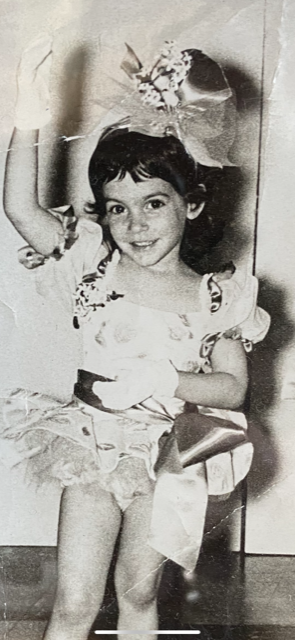
Noel performing at the age of 3, one of her earliest memories of experiencing anxiety.
Noel: The book is my response to the spike in anxiety we’ve been seeing in kids over the last decade….about 1/3 of kids qualify for an anxiety disorder.
I wanted kids and adults to learn more about anxiety and its patterns (i.e. avoidance, catastrophic thinking, global thinking, internally focused)…have a better understanding of how anxiety affects the mind, body, decision making, behavior, and relationships, and most importantly, I wanted folks to know they can do something about their anxiety by implementing a strategy to help the mind and body reset.
With the pandemic, obviously, parents, teachers, counselors, kids, etc. have been dealing with lots of uncertainty, which is an opportune time for anxiety to move on in and take over.
I think this past year and a half helped us realize we need more tools in our toolboxes—adults and kids—starting by spreading more awareness about anxiety, teaching coping skills, and providing parent/teacher education in these areas, as it’s challenging to deal with an anxious child, especially if you haven’t been trained as to what to do. The most loving and caring teacher or parent on the planet but might be inadvertently feeding the anxiety vs. helping them build skills and feel empowered.
I thought a children’s book was an approachable way to begin a conversation about anxiety…I’ve used the book with all ages from preschool to adults… we can learn about anxiety and its patterns through the characters while also learning an actionable strategy that can be used anyplace, anytime to manage anxious thoughts.
I figured young and old could relate to being stung by a bee and how a common occurrence can for some become very worrisome, while for others it’s no big deal…what makes one person anxious doesn’t necessarily make another person anxious. Being worried about bees can begin a conversation about other common worries…when I work with kids in middle school and older, the “bees” or a bee’s nest becomes a metaphor for whatever worries us.
Teachers and parents aren’t typically trained in how to help kids who experience anxiety, and while much advice we commonly hear about anxiety is well intended, it’s not often helpful or effective. Folks often feel they’re being helpful by providing an anxious person with certainty, comfort, and constant reassurance…it may alleviate anxiety for the short term, but it doesn’t help folks manage anxiety next time it shows up, and it will! Anxiety needs skill-building, problem-solving and while this may sound counterintuitive, anxious kids and adults need to learn how to tolerate a “bit” of discomfort as they step into anxiety-provoking situations, so they can learn to manage their anxiety and ultimately stress less, enjoy more!
MCA: What kind of response from readers have you received?
Noel: Terrific! I often receive letters from teachers and parents, and while many may say they bought the book to help their kids or students, many say it helps them too! The book/strategy can help any age, I’ve even used it with adult athletes and business professionals.
Anxiety is treatable, yet most folks don’t get help. I hope the book gives people hope and empowers kids and adults who experience anxiety with a relatable story, actionable strategy, and helpful resource.
MCA: That is amazing. Thank you for writing such an insightful book and for sharing some of those insights with us today! If you haven’t picked up Noel’s book ABC Worry Free yet, make sure you do!
You can learn more about Noel Foy and her award-winning book, ABC Worry Free by visiting her MCA Shop pages.

